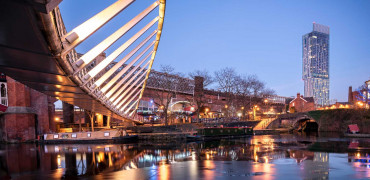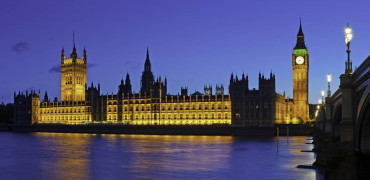We’ve just launched a free guide to help building owners and managers reduce the risk of their buildings becoming stranded assets due to not reaching the government’s environmental standards.
The new white paper, ‘Stranded assets: A roadmap to net zero for new and existing buildings’ aims to provide building owners and managers with more insight on the importance of setting up their buildings for net zero, and describes methods on how they can achieve this.
For building owners, the guide offers insights into current thinking on what net zero buildings are and where legislation and guidance on this issue is heading.
It also looks at the heating, ventilation and air conditioning (HVAC) systems that can help on the journey to net zero carbon emissions for both new and refurbished buildings. This includes the essential questions that clients should ask their design teams at the early stages of a project.
1.4 billion sq. feet of UK retail space may be unlettable by 2023
The future is already here
Around 80% of the buildings we will occupy in 2050 have already been built, so owners of older properties are already facing the costs associated with meeting higher standards for Energy Performance Certificates (EPCs) as well as the disruption of switching from gas boilers to heat pumps.
This means many buildings are falling further behind environmental requirements every year. Yet the longer building owners leave it to upgrade their buildings, the more it is likely to cost in the long run, and they face the serious possibility that they will not be able to rent their building, whilst its sales value shrinks, turning it into a stranded asset.
Our white paper aims to help owners avoid their buildings becoming stranded assets by providing a clear roadmap to net zero.
It contains a number of sections assisting in bridging the net-zero knowledge gap for business owners, outlining the government’s net-zero plan and showing what defines a net-zero building.
Unclear regulations
While government policy focuses on legislating for energy efficiency in buildings, it has fallen short of providing clear regulations or definitions for ‘net zero carbon’ buildings. It is therefore challenging for clients to specify even a brand new ‘net zero’ building simply because today’s definitions are unclear.
Legislation is not the only driver for change in our built environment. Many corporations are also setting their own net-zero carbon emissions targets and want low-carbon buildings to align with these strategies. Financial investors are also showing an increased preference for sustainable/environmental property developments.
A new generation of employees and customers is also making it clear that they want to work in or deal with organisations that demonstrate (and deliver) commitment to environmental issues.
The building an organisation occupies is a very public statement of those ideals and can also help attract the right staff and draw in customers.
Don’t get stranded
The financial disadvantages to not choosing low-carbon technologies are serious though and the guide outlines the fact that 1.4 billion sq. feet of UK retail space may be unlettable by 2023 if these energy efficiency issues aren’t addressed.
As the UK currently relies heavily on fossil fuels to heat and cool buildings, decarbonising the HVAC systems in buildings is an incredibly important step.
The Stranded Assets guide provides advice on installing heat pumps and utilising heat recovery in the decarbonisation of heating and ventilation, along with tips on adopting low GWP refrigerants.
With rising building standards brought in to help the industry reach net zero, we’re seeing large numbers of spaces potentially becoming redundant due to energy inefficiency.
Building owners must now confront the fact that a lot of current stock is in danger of becoming stranded assets unless they tackle these issues head on.
As well as the retro-fit sector, this also applies to buildings being constructed right now.
Whether a building is still at the early design stage or is an existing and occupied space, the best time to plan for a net zero future is now.
The roadmap features questions that managers should be asking themselves and their partners in the building and planning process, considerations that must be made when working towards net zero, suggestions for sustainable replacements, and tailored advice for specific HVAC equipment.
If you are a building owner, or a supplier working on HVAC equipment the you can download the Stranded Assets whitepaper for free here.
Chris Newman is Zero Carbon Design Team Manager



